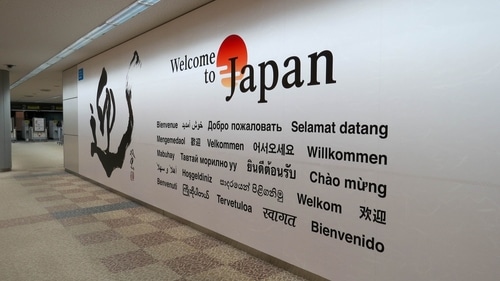Travelling to Japan is an exciting adventure, but one of the first questions most travellers ask when planning the trip is: how long is the flight to Japan from Australia? While flight durations can vary depending on where in Australia you’re departing from and whether you book a direct or connecting route, there are some general patterns that make planning easier.
In this Remitly guide, we’ll walk you through everything you need to know before takeoff. That includes average flight times from major Australian cities, common layover routes, and the factors that can affect travel duration. By the end, you’ll feel more confident about your travel plans and know how to make the trip as smooth and enjoyable as possible.
How long is a direct flight to Japan from Australia?
Direct flights are the simplest and often the most convenient way to travel from Australia to Japan. With no layovers to worry about, you board in Australia and land in Japan, making the journey easier to plan and more predictable.
Japan’s major international airports include Tokyo’s Haneda (HND) and Narita (NRT), Osaka’s Kansai (KIX), and Nagoya’s Chubu Centrair (NGO). Most direct flights from Australia arrive into Tokyo or Osaka, but connecting flights between major Japanese cities are fast, frequent, and efficient.
From Sydney, Melbourne, and Brisbane, direct flights to Tokyo typically take around 9-11 hours. Cairns, being further north, has an advantage with shorter flight times of about 7-8 hours, and sometimes has direct routes to Osaka as well. Perth also has some direct services to Tokyo, with flight times of around 9.5 hours.
Here’s a quick summary of direct flights from several Australian cities to popular destinations in Japan:
| Departure city | Arrival city | Typical direct flight time |
| Sydney (SYD) | Tokyo (HND/NRT) or Osaka (KIX) | ~9-10 hours |
| Melbourne (MEL) | Tokyo (HND/NRT) | ~10-11 hours |
| Brisbane (BNE) | Tokyo (HND/NRT) | ~9 hours |
| Cairns (CNS) | Tokyo (HND/NRT) or Osaka (KIX) | ~7-8 hours |
| Perth (PER) | Tokyo (HND/NRT) | ~9.5 hours |
These flights are commonly operated by major airlines like Qantas, Japan Airlines, All Nippon Airways (ANA), and Jetstar. Each carrier has its own approach to seating, entertainment, and meal service, so it’s worth comparing what matters most to you—whether that’s extra legroom, Japanese meal options, or access to certain loyalty programs.
TIP: Booking a flight that departs Australia overnight can be a smart strategy, as you’ll arrive in Japan in the morning, ready to start your day after some rest on board.
What about flights with layovers?
Not every city in Australia offers a direct flight to Japan. Travellers from Adelaide or smaller regional airports usually need at least one stop along the way. Even from cities with direct service, some travellers choose a connecting route for reasons such as price, frequent flyer miles, or more flexible departure times.
Layovers naturally extend your journey. For example, a Perth to Tokyo flight with a stop in Singapore might take 12-15 hours, depending on how long you wait between flights. A Melbourne to Osaka trip with a connection in Hong Kong or Manila could range from 11-13 hours.
Making the most of your layover
Some travellers find layovers a welcome break, especially if sitting still for nine or ten hours straight feels challenging. Others prefer to power through and get the flight over with. It really depends on your travel style and priorities.
If your layover lasts more than five hours, it can be a good opportunity to rest and recharge. Bring a portable charger, pack snacks, and wear comfortable clothes that make moving around easier. For families or older travellers, layovers can help break up the trip and reduce fatigue, especially when travelling with young children or after a long work week.
Airport experience and stopover programs
The experience of a layover often depends on the airport itself. Some major hubs like Singapore’s Changi Airport or Hong Kong International Airport are designed with comfort in mind, offering quiet lounges, play areas, and even gardens to explore.
Others may be more functional, providing limited seating and basic food options. Checking in advance what’s available can help you plan whether to rest, stretch your legs, or grab a proper meal.
Some airlines also offer stopover programs, allowing you to explore a connecting city for a few hours or even a night without paying extra airfare. For instance, Singapore Airlines offers hotel or city-tour packages for passengers with long layovers, which can add a mini adventure to your trip while giving you time to recharge.
Factors that affect your travel time
Even once you’ve chosen your departure city and decided on a direct or connecting route, a few practical factors can still influence the total time you spend in the air.
Departure city
Your departure city is the largest factor in flight duration. Flights from Cairns or Brisbane are naturally shorter because of geography; they’re closer to Japan than southern cities like Melbourne. For example, Cairns to Tokyo might be just under eight hours, while Melbourne to Tokyo is closer to 11.
Time of year
The time of year can also play a role. Seasonal winds, like the jet stream, can shorten or lengthen your flight by 20-30 minutes. Flying with a strong tailwind often means you’ll arrive a bit earlier, while headwinds or stormy weather can add some time. Typhoon season, which typically happens from late summer to early autumn in Japan, may also cause delays, though airlines plan carefully to minimise disruptions.
Airline and aircraft
The airline and aircraft type also matter. While the difference isn’t usually big, certain planes cruise at slightly different speeds, or they may take slightly varied routes based on operational needs (such as air traffic or weather considerations). The result can be a flight that’s 15-30 minutes longer or shorter than another on the same day.
Air traffic and routing
Airlines coordinate daily with air traffic to select the most efficient path based on wind direction, safety, and congestion. For example, a Sydney-to-Tokyo flight may pass over the Philippines one day and fly closer to Taiwan the next. These small variations can change your total time in the air by 10-20 minutes, which is normal and nothing to worry about.
Which is the best Australian airport to fly from?
If you have the flexibility to choose where you fly from, it’s worth thinking about what matters most to you.
If you’re looking for the shortest possible flight, Cairns and Brisbane are good options, since they’re geographically closer to Japan. Cairns, in particular, is popular with travellers heading to Japan’s southern regions or those who want to minimise time in the air.
If you prefer more flight options and flexibility, Sydney and Melbourne are stronger choices. These airports have multiple daily flights to Japan, served by several airlines, giving you more opportunities to compare times, services, and prices.
If you’re flying from Australia’s west coast, Perth is the main hub. It now offers direct flights to Tokyo, alongside connecting options through Asian cities like Singapore or Kuala Lumpur. With careful planning, you can choose a route that balances travel time and comfort.
If you’re planning a multi-city itinerary, consider mixing airports. For instance, you could fly from Sydney to Tokyo, explore Japan for a week, then return from Osaka to Melbourne. Multi-city tickets often cost about the same as round-trip tickets and can save hours of backtracking within Japan.
Best times to visit Japan
Japan is a country of distinct seasons, and each one offers something special. When planning your trip, it helps to know what you can expect in terms of weather, festivals, and sightseeing opportunities.
Spring (March-May): cherry blossoms and Golden Week
Spring is famous for cherry blossoms, especially in Tokyo and Kyoto. Parks and temples bloom in pink, perfect for picnics and festivals. Late April to early May marks Golden Week, a busy but colourful series of national holidays.
Summer (June-August): festivals, greenery, and rainy season
Summer brings heat and humidity in most regions, though Hokkaido and the Japanese Alps stay cooler. June starts the rainy season, refreshing gardens and countryside landscapes. Summer is also full of lively festivals and fireworks.
Autumn (September-November): fall foliage and comfortable weather
Autumn offers cooler temperatures and vibrant foliage. Gingko trees turn golden, and maple leaves glow red across gardens, forests, and mountainous areas, providing stunning scenery.
Winter (December-February): snow, skiing, and festivals
Northern Japan experiences heavy snowfall, ideal for skiing. The Sapporo Snow Festival features elaborate snow and ice sculptures, and winter illuminations add charm to other regions. Hot springs offer a relaxing way to enjoy snowy landscapes.
Shoulder seasons, like late May and early December, often offer cheaper tickets and fewer crowds while still providing comfortable weather. Booking flights at least 2-3 months in advance can help secure better prices and seat selection.
Your Japan trip is closer than you think
Direct flights from Australia to Japan range from about 7-11 hours, depending on where you start. Sydney, Melbourne, Brisbane, and Perth offer straightforward direct flights, while other cities usually involve at least one stop.
With this clear picture of travel times and options, you can confidently plan the rest of your trip. From what to pack to when to fly, these details help you arrive ready to enjoy everything Japan has to offer.
FAQs
What is the shortest flight time from Australia to Japan?
A direct flight from Cairns to Tokyo or Osaka is usually the quickest, at around 7-8 hours.
Are there direct flights from major Australian cities to Japan?
Yes. Direct flights are available from Sydney, Melbourne, Brisbane, Cairns, and Perth. They’re typically operated by Japan Airlines, ANA, Qantas, and Jetstar.
What are the popular travel seasons for Australians visiting Japan?
Spring (March-April) for cherry blossoms, and winter (December-February) for New Year events and winter lights are the most popular.
Which airlines fly directly from Australia to Japan?
Qantas, ANA, Japan Airlines, and Jetstar are the main carriers offering direct flights. Depending on the season, other airlines may also add services.
How much longer do flights with layovers take?
Flights with one stop generally add 3-5 hours to your total travel time, depending on the layover city and how long you wait between connections.

